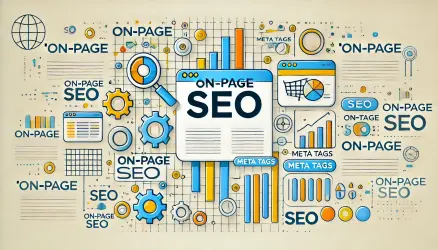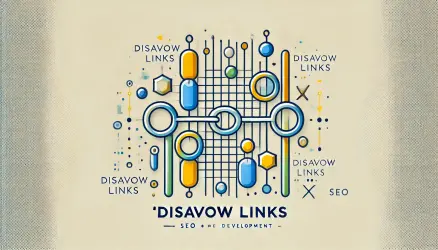Maintaining a WordPress website goes far beyond launching it and letting it run. Like any digital asset, a website requires regular updates, backups, security checks, and yes, server maintenance, to ensure long-term stability, user satisfaction, and success.
In this guide, you’ll learn what proper maintenance includes, why it matters and we’ll describe some real-world examples that show why skipping it can cost you even more.
Think of your WordPress website like a car, without regular maintenance, things break down, security risks increase, and functionality suffers.
Why Website Maintenance Is Critical
Neglecting website maintenance can lead to a range of issues, including:
- Security vulnerabilities and hacking
- Broken functionality and outdated plugins
- Loss of search engine rankings
- Bad user experience and lower conversion rates
- Server overloads or performance bottlenecks due to lack of optimization
Essential WordPress Maintenance Tasks
Maintaining a WordPress website involves more than just clicking “Update.” Below is a breakdown of the most important maintenance tasks every site owner should routinely perform:
1. Update Core, Themes & Plugins
- Keep the WordPress core updated for improved stability and security
- Update all plugins and themes weekly
- Remove any unused or outdated plugins and themes
2. Backup the Website
- Schedule automatic daily or weekly backups
- Use trusted plugins like UpdraftPlus, BlogVault, or Jetpack Backup
- Store backups offsite using Dropbox, Google Drive, or a remote server
3. Monitor Security
- Install a security plugin such as Wordfence or iThemes Security
- Use strong, unique passwords and update them periodically
- Enable two-factor authentication for admin users
4. Monitor Uptime
- Use tools like UptimeRobot, Better Uptime, or StatusCake
- Receive instant alerts if your site goes offline
- Track uptime trends to detect hosting reliability issues
Even a few minutes of downtime can cost you leads, sales, and SEO credibility. Uptime monitoring helps you react before users even notice a problem.
5. Run Database Optimization
- Clean up post revisions, transients, spam comments, and other unnecessary data
- Use plugins like WP-Optimize or Advanced Database Cleaner to automate cleanup
6. Check for Broken Links
- Use plugins such as Broken Link Checker or online scanners to identify dead links
- Fix or redirect broken URLs to maintain SEO health
7. Test Forms, Popups & Checkout
- Regularly test contact forms, newsletter signups, and eCommerce checkout flows
- Verify that all scripts, APIs, and integrations are working correctly
8. SEO Health Checks
- Use Yoast SEO or Rank Math to optimize on-page SEO
- Submit updated sitemaps to Google Search Console when needed
- Monitor indexing and performance reports for technical issues
9. Comment Moderation & Spam Control
- Use plugins like Akismet or Antispam Bee to block spam comments
- Disable comments on older posts to minimize bot activity
- Regularly empty spam and trash comment folders
10. Server Maintenance & Hosting Optimization
- Keep PHP, MySQL/MariaDB, and your web server (Apache/Nginx) updated to the latest stable versions
- Clear server cache and review error logs regularly
- Monitor disk space, memory, and CPU usage to prevent slowdowns
- Restart services or the entire server when performance degrades
- If using managed hosting, review performance reports and contact support for any irregularities
Server-level issues can affect your website’s speed or uptime even if WordPress itself runs perfectly. Proactive maintenance helps you stay ahead of potential failures.
Real-World Maintenance Scenarios
Still unsure why regular maintenance matters? Here are several real-world examples showing the risks of neglecting WordPress maintenance:
- Online Store Checkout Failure:
A WooCommerce store that failed to update its payment gateway plugin experienced checkout errors for two weeks. In that time, it lost hundreds of potential sales and saw a dramatic rise in cart abandonment. - Malware on an Outdated Blog:
A personal blog running an old version of WordPress was infected with malware due to an outdated theme. Google flagged the site and temporarily removed it from search results, leading to a major drop in traffic. - Lost Leads from a Broken Contact Form:
A business website’s contact form stopped functioning after a plugin update. For more than a month, inquiries from potential clients went undelivered until a customer called to report the issue. - Slow Site from Server Overload:
A membership website hosted on a shared server began crashing during peak traffic. The cause was outdated PHP and maxed-out server resources, a problem that proper server monitoring would have detected early.
Real-World Maintenance Scenarios
Still unsure why regular maintenance matters? Here are several real-world examples showing the risks of neglecting WordPress maintenance:
- Online Store Checkout Failure:
A WooCommerce store that failed to update its payment gateway plugin experienced checkout errors for two weeks. In that time, it lost hundreds of potential sales and saw a dramatic rise in cart abandonment. - Malware on an Outdated Blog:
A personal blog running an old version of WordPress was infected with malware due to an outdated theme. Google flagged the site and temporarily removed it from search results, leading to a major drop in traffic. - Lost Leads from a Broken Contact Form:
A business website’s contact form stopped functioning after a plugin update. For more than a month, inquiries from potential clients went undelivered until a customer called to report the issue. - Slow Site from Server Overload:
A membership website hosted on a shared server began crashing during peak traffic. The cause was outdated PHP and maxed-out server resources, a problem that proper server monitoring would have detected early.
Final Thoughts
WordPress maintenance isn’t a one-time task, it’s an ongoing commitment that protects your website’s performance, security, and reputation. Whether you manage it yourself or rely on professionals, make maintenance an integral part of your digital strategy.
Remember: a well-maintained WordPress site is faster, safer, and better equipped to grow alongside your business.
Need Help Maintaining Your WordPress Site?
Not sure where to begin or simply want peace of mind? Get in touch to explore our WordPress maintenance packages, we’ll handle your updates, backups, security, and server health so you can focus on growing your business.


